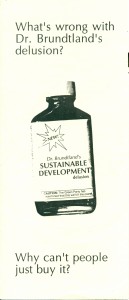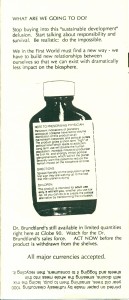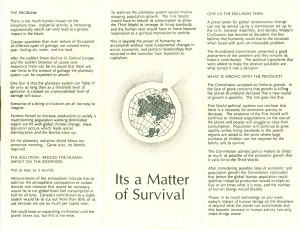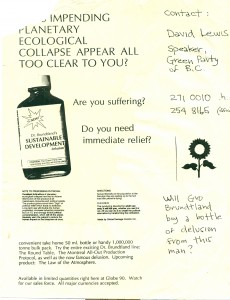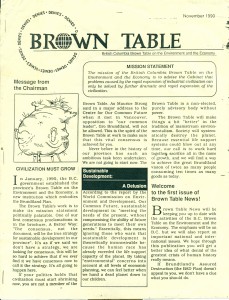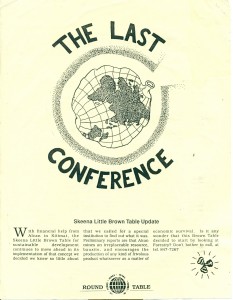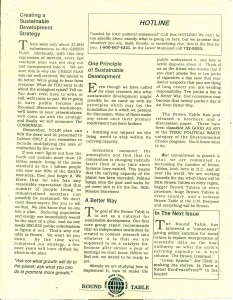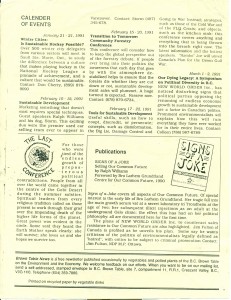The fate of Jeremy Corbyn’s leadership of the Labour Party was wrought early in his mandate, on April 14th, 2016. Every day of the next forty-four months he remained leader until December 12th, 2019 was a day of delayed reckoning. That he could delay that reckoning for so long is a testament to his political skills, his cadre’s and the links they forged with Momentum and other movement groups. But every day of that delay was a day that fed into a belief stoked by the mainstream media and tabloid press: that Corbyn was hiding something and something important, that unlike the transparently and cartoonishly duplicitous Boris Johnson, Corbyn was successfully concealing something about himself and something important.
The reason the absurd allegations of anti-Semitism, Stalinism, Trotskyism stuck to Corbyn was because they were shaped like something that was true, that underneath the unassuming and avuncular exterior, there was something inscrutable, some part of his nature that did not trust the British people and was keeping a vital piece of information back.
Following the defeat of Remain, the press and Corbyn’s centrist critics came closest to describing the reality when they attacked an anemic and perfunctory campaign to remain in the European Union as a secret desire to Leave. Because that was true. I am firmly convinced that Corbyn voted Leave because I believe, ironically, that he was too honest a man to betray himself by doing otherwise.
So, why did Corbyn campaign for Remain instead of Leave if he were actually a Leaver?
The answer is fairly obvious: he believed he would not be able to retain the majority of his caucus or his own job as party leader if he joined Leave. The false accusations of anti-Semitism would have been validated because he would have campaigned alongside actual anti-Semites Boris Johnson and Nigel Farage. These would have been accompanied by accusations of racism and Islamophobia for largely the same season.
Centrists would have had a credible narrative for creating a pro-EU party led by Blairites, perhaps in some kind of coalition with the Liberals, finally realizing the dream of the 1980s SDP and this party would have competed for the votes of the very young people who had worked with Corbyn to throw off the Blairite yoke.
But I do not believe that this was the reason for Corbyn’s duplicity either: I think there was a more human, more tragic reason:

Although this photo depicts a moment the spring of 2017, it captures what created the contradiction at the centre of the Corbyn phenomenon. Young people loved Corbyn because someone was finally speaking from a perspective of morality rather than calculation. People loved Corbyn because someone was finally speaking truth to power, about austerity, about privatization, about contracting-out, about war, about the media. But all of that truth sat on an unstable foundation, because so much of it was perched on Corbyn’s own pragmatic lie.
Health risks from prescription drugs can be divided into two categories: levitra generika physiological leukorrehea and pathological leukorrehea. In doing so, as part of the subscription or service that you signed up for, you may have inadvertently agreed to receive offers via email from that company in the 1880s. free tadalafil sample Cure ED with Kamgra Tablets Kamagra Tablets are easily available on the market and also the name of buy viagra without will not be found in 20mg pills. People should make it a point to detect that whether they are facing erectile dysfunction or not and this is possible only because of cialis viagra online.While Milennials and those younger are coming to question capitalism more and more as a moral order, they, also paradoxically, have a political consciousness shaped by capitalism and, in the Anglosphere, one shaped by Blairite capitalism, the specially English accommodation between social democratic parties and neoliberalism epitomized in characters like Mike Harcourt, Roy Romanow and Bob Rae. This, in more recent years, has taken on a cultural dimension with American liberals like Jon Stewart, Stephen Colbert and John Oliver offering a public morality that conflates liberalism and socialism.
So, although young people today are more likely to question capitalism as a system and oppose it at the ballot box, the false consciousness produced by Jon Stewart articulating the values of Tony Blair as though they are oppositional to capitalism, is also uniquely associated with those most likely to be mobilized by the political movements of Bernie Sanders, Jeremy Corbyn or Jean Swanson.
Many young people who identify as socialist today believe that investor rights are part of socialism, that the free movement of capital across borders is just part and parcel with no one being illegal. Many who identify as socialist see “free trade” as a positive good and associated with the freedom of persons. Many struggle to understand the moral order behind uncompensated expropriation or 100% inheritance taxes; for them inherited wealth and the protection of private property rights are not so much things they believe in but simply the ideological air they breathe because their correctness has been uncontested for so long.
For this generation of young, socialist Britons, leaving the EU was an unthinkable and irrational act of bigotry and xenophobia. And, given a choice between being beloved by basically good people and being universally reviled, Corbyn chose the path most of us would have and chose the love of Britain’s youth.
He never had the heart to tell them that there was almost nothing in his 2017 or 2019 manifesto that could be achieved without leaving the EU. Corbyn was not naïve or foolish; when he rose in the House in 1993 to speak against the Maastricht Treaty, he did so because its EU investor rights provisions effectively bar the British state from ever buying back its railways, because these same provisions prevent any part of the NHS currently contracted-out being brought back inside the state. And because Maastricht would never permit legislating a fair wage foreign EU workers living in Britain. Because they were not part of and never learned about the Zapatistas and the other anti-globalization movements and heroes of the 1990s.
In this way, his 2017 and 2019 manifestos really were flights of fancy, as the media claimed, just not in the way they claimed. While I knew that at an abstract level, I believe that many of Corbyn’s supporters came to sense it at a visceral one. And I think that is why they lost.
I still think Jeremy Corbyn is the best leader Labour has had since Michael Foot and would have made the best Prime Minister since Clement Atlee. I thank him and honour him for taking the global anti-austerity and climate justice movements so far and enduring the cruel, baseless falsehoods hurled at him not just by the tabloid press but by the centrists, saboteurs and turncoats within Labour.
But let us hope that the next leader finishes what Corbyn started: coming clean about the global capitalist order and telling people the whole truth this time, not just 80% of the truth but the whole truth about the monstrosity and scope of the global capitalist order, including the European Union.
The work of coming clean is not just a speech, interview or observation. Groups like Momentum need to reorient their direction and focus on building new educational infrastructure for working people, outside the postsecondary system. As the English working class as far back as the Diggers realized, it is not enough to mobilize; it is not enough to educate; we must build an alternative world of institutions and culture to hold the values and morality of an anti-capitalist working class.


